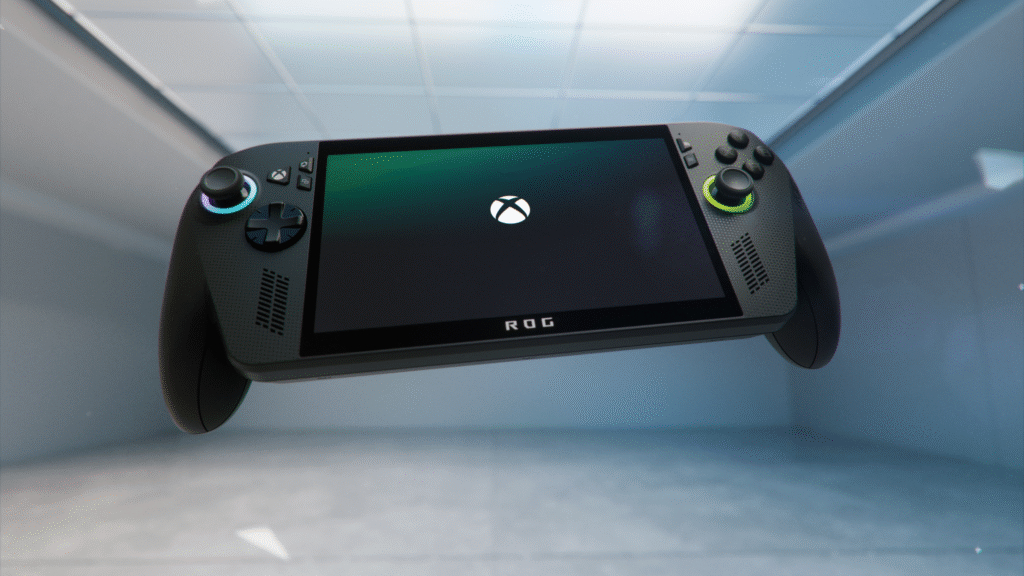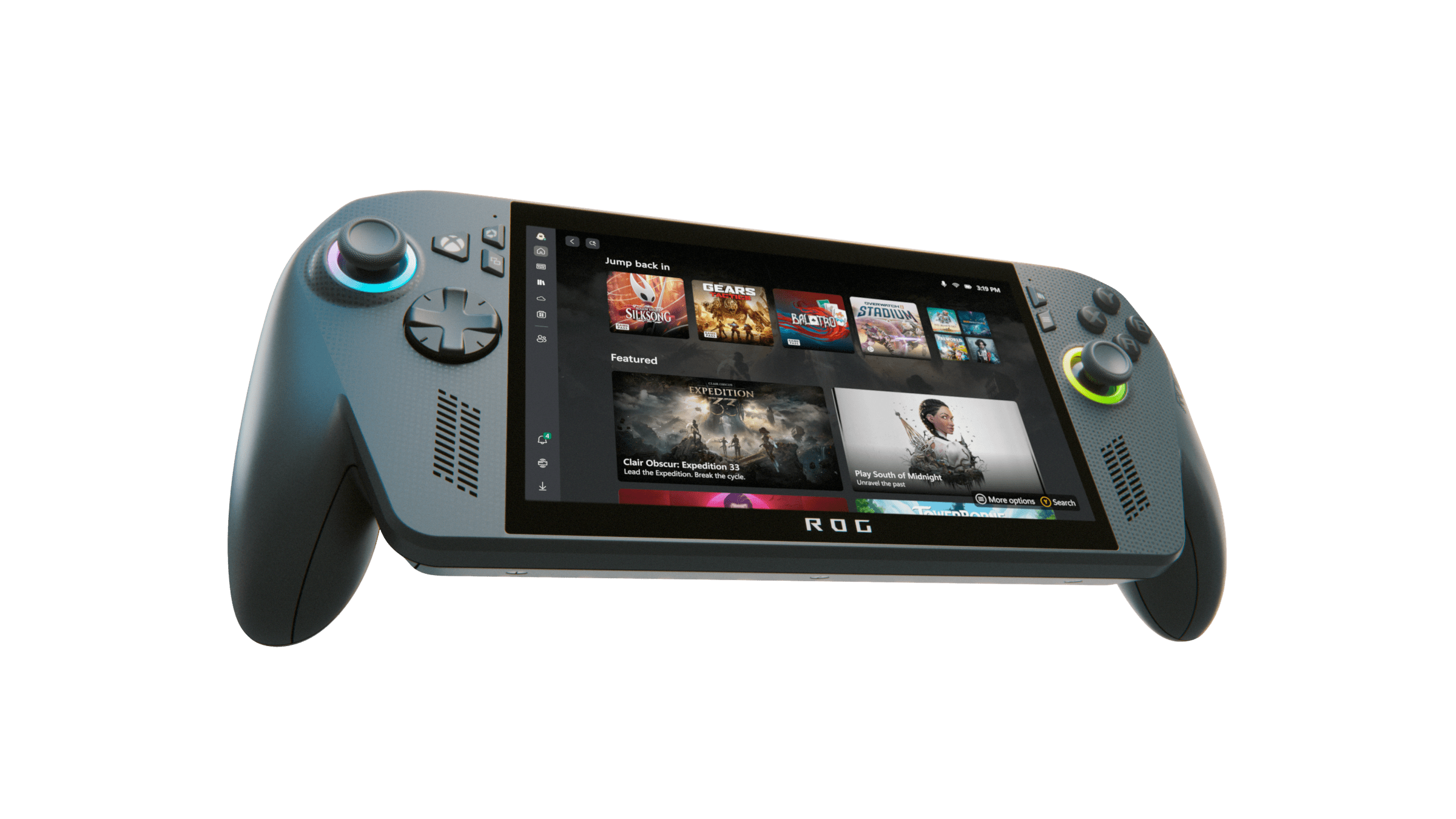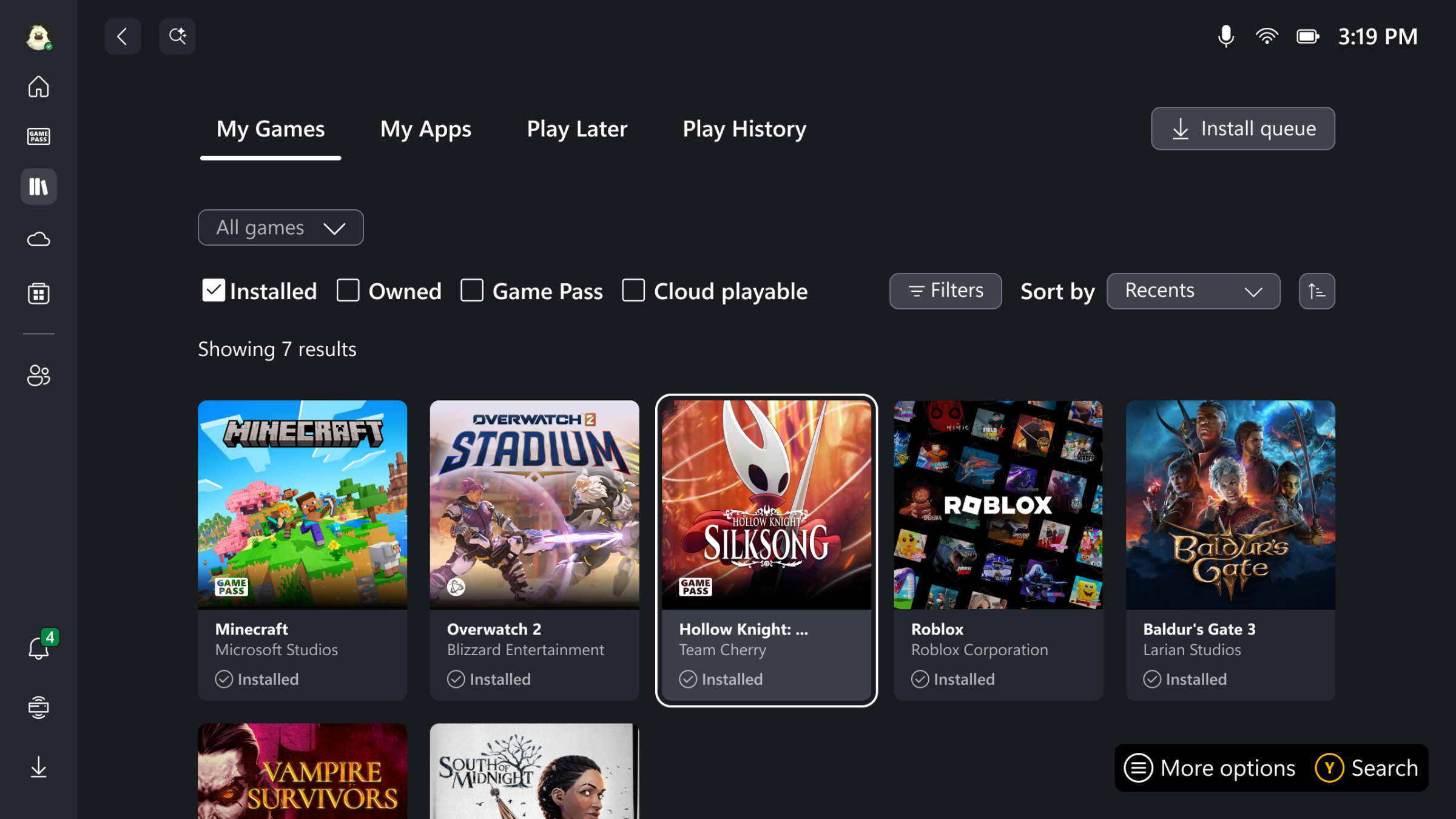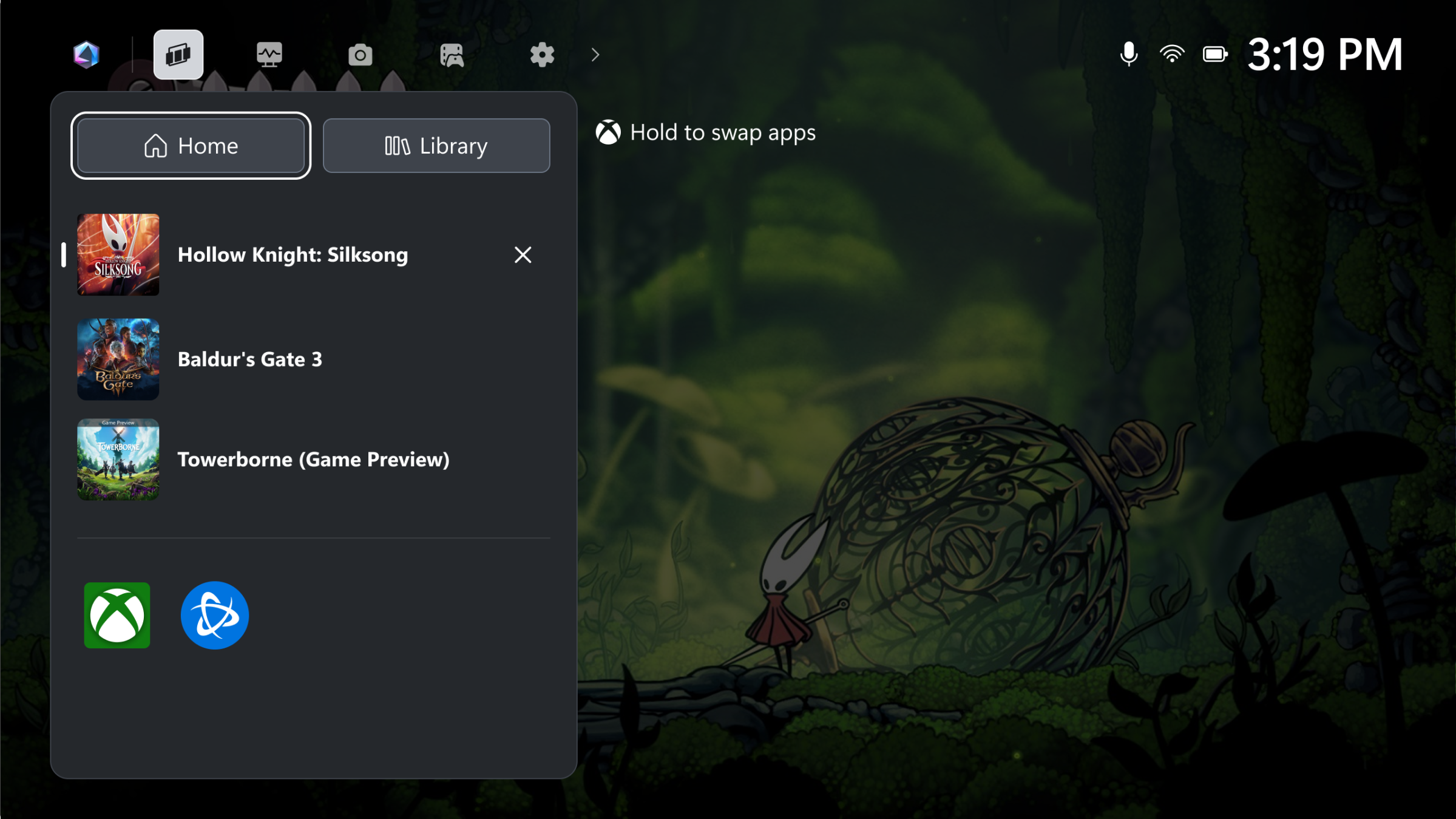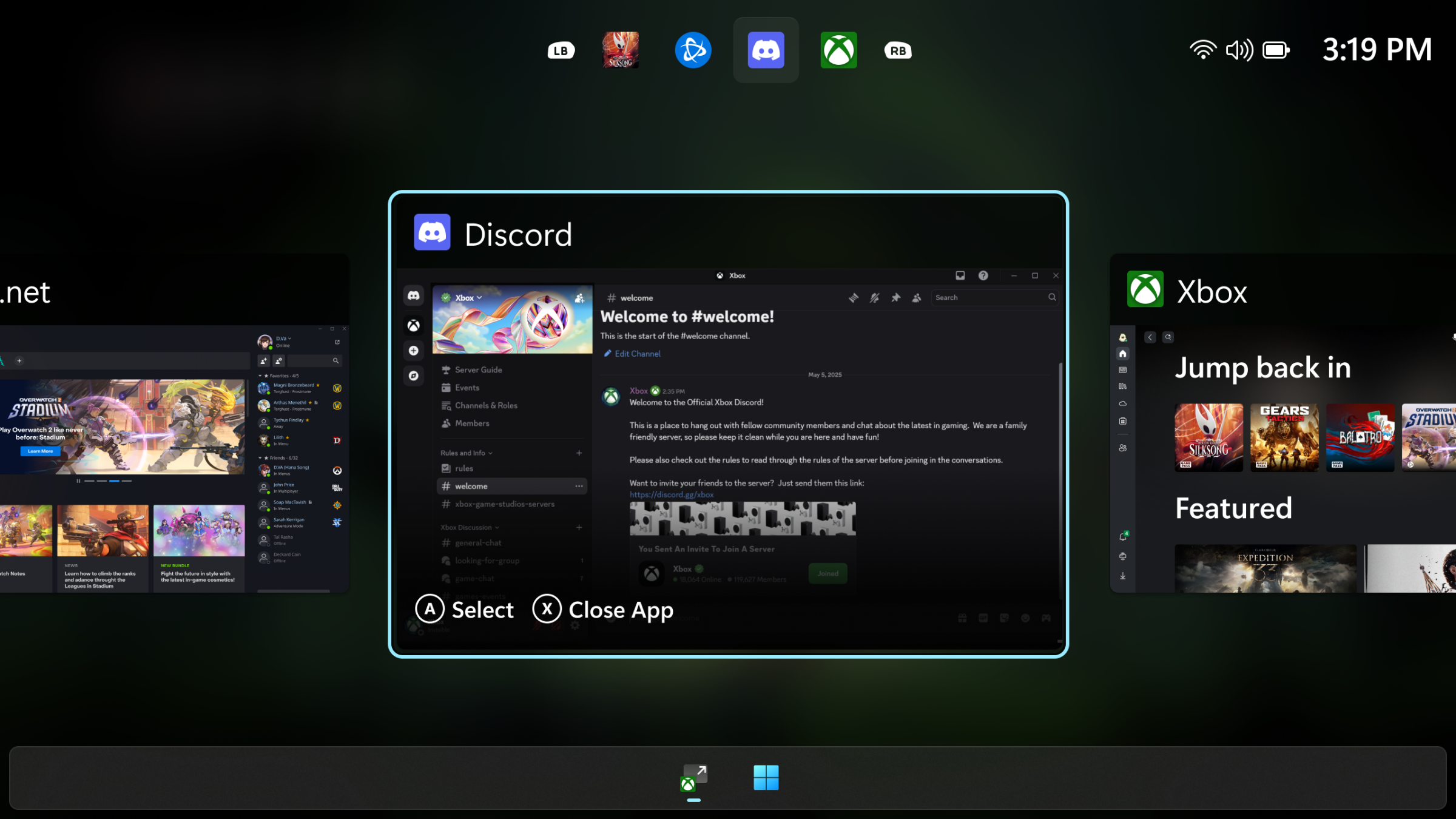Microsoft and Asus have just announced two ROG Xbox Ally devices that include a new full-screen Xbox experience for handhelds. After promising to combine “the best of Xbox and Windows together” for handhelds earlier this year, Microsoft is now revealing exactly how it is overhauling the Xbox app, Game Bar, and Windows itself to better compete with SteamOS.
Microsoft has needed to respond to SteamOS ever since the Steam Deck launched three years ago, and it has steadily been tweaking its Xbox app and the Xbox Game Bar on Windows to make both more handheld-friendly. But there was always a bigger overhaul of Windows required, and we’re starting to see parts of that today.
“The reality is that we’ve made tremendous progress on this over the last couple of years, and this is really the device that galvanized those teams and got everybody marching and working towards a moment that we’re just really excited to put into the hands of players,” says Roanne Sones, corporate vice president of gaming Devices and ecosystem at Xbox, in a briefing with The Verge.
Microsoft demonstrated this handheld-friendly combination of Windows and Xbox to The Verge in a briefing earlier this week, but it was a virtual demo so we haven’t been able to try it fully yet. It all starts by booting directly into a new Xbox full-screen experience on these ROG Xbox Ally devices that focuses on the Xbox app and Game Bar, alongside being a launcher for all your PC games — yes even Steam ones.
“We were able to take people who have been working on the Xbox OS for 20 years or more and have them work directly on the Windows codebase and start reimagining what that operating system looks like for this form factor,” explains Jason Beaumont, vice president of experiences at Xbox. “These two things combined led us to build a bunch of features.”
The Xbox full-screen experience is very much the compact mode of the Xbox app taking full control of the ROG Xbox Ally devices, instead of the familiar Windows desktop and taskbar. “When the player boots into the full-screen experience there is a whole bunch of Windows stuff that doesn’t get loaded,” says Beaumont. “We’re not loading the desktop wallpaper, the taskbar, or a bunch of processes that are really designed around productivity scenarios for Windows.”
You can still exit this full-screen mode and launch the full version of the Windows desktop, but by default it will by hidden away. “We’ve reduced many notifications and pop-ups, and we will continue to listen to feedback from players to make continued improvements,” says Sones.
The Xbox app itself in full-screen mode looks very similar to what exists on Windows right now, except the library is now full of all of your PC games from Steam and other stores, alongside ones from Xbox Play Anywhere and Game Pass. Where it really gets interesting is the Game Bar.
“We’ve made a lot of improvements to Game Bar over the last year, and really it was driving towards this device,” says Brianna Potvin, principal software engineering lead at Xbox. A short press on the Xbox button on the Xbox Ally devices brings up the Game Bar interface, and you can use this to access device settings like Wi-Fi or Bluetooth, Asus’ Command Center interface, and even Microsoft’s new Gaming Copilot. If you long press on the Xbox button then you’ll even get a more handheld-friendly task switcher, which lets you alt+tab between apps and games using the controller.
I’ll need to try this new interface fully to really get a feel for the Windows changes here, but Microsoft is promising that this isn’t just lipstick on top of Windows. “This isn’t surface-level changes, we’ve made significant improvements,” says Potvin. “Some of our early testing with the components we’ve turned off in Windows, we get about 2GB of memory going back to the games while running in the full-screen experience.”
That’s a good step to improve the performance of Windows on handhelds, but one of the big pieces of feedback around the handheld experience is the sleep situation where Windows-powered devices often draw far too much battery life when they’re idle.
“If you’re booting your device into the full-screen experience and you’re putting it down and it’s going to sleep, it draws one third of the idle power draw than if it was booting the same device into the [Windows] desktop experience,” claims Potvin. Microsoft is still focused on battery life and power efficiency for this full-screen mode, so we might even see further improvements before devices ship later this year. Microsoft has also made improvements to the Windows lockscreen, so you can now use a controller to log in using a PIN code, or navigate around in this part of Windows.
This updated Xbox app will now work as a launcher for all your PC games, but you’ll still be able to interact with Windows apps and those other launchers freely in this full-screen handheld experience. Sones says Microsoft is “working closely with leading storefronts to have them optimize their full screen experience,” to make it easy for everyone to play a full library of PC games from Steam, Epic Games Store, and elsewhere.
“The aggregated gaming library within Xbox on PC will be available for all Windows 11 devices,” says Sones, so you’ll soon be able to see all of your Steam games within the Xbox app on any PC.
Microsoft is also creating its own version of Valve’s Steam Deck verified program, allowing you to see what games are optimized for handhelds like the Xbox Ally and Xbox Ally X. You’ll also be able to access your full Xbox console library on handhelds thanks to either Xbox Cloud Gaming or Remote Play from an Xbox console, but most console games won’t play natively unless there’s a PC version or they’re part of Xbox Play Anywhere.
The best part of all these Windows changes is that you won’t necessarily need a new device to benefit from them. “The Xbox full-screen experience will first come to the ROG Xbox Ally and the ROG Xbox Ally X, and our next focus will be updating the in-market ROG Ally and the ROG Ally X,” says Sones. “Similar full-screen Xbox experiences will be rolling out to other Windows handhelds, starting next year.”
Valve is also supporting SteamOS on the ROG Ally, so we should be able to compare Valve and Microsoft’s handheld operating systems on the same hardware soon. We don’t yet know if Microsoft has done enough to stop other PC makers from being tempted over to SteamOS like Lenovo has, but Microsoft’s efforts are really setting up a battle between Windows and Linux for the future of handheld gaming PCs.
Content shared from www.theverge.com.

